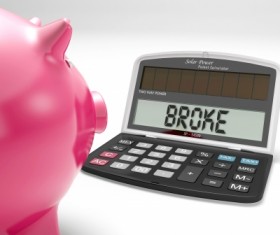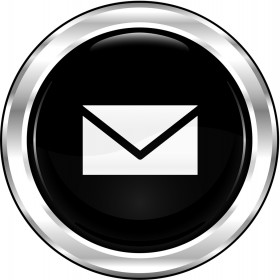For many dealing with the holiday email back-log is one of the most stressful aspects of taking a break. More stressful some say than, losing your luggage, having to look after aging parents or fractious children. It compels them to stay connected even although it might adversely impact their holiday (as Lucy Kellaway recently found).

Email overload free vacation
Last week Daimler introduced an email programme which automatically deletes employees emails when they are on leave. It sends a message to the sender asking them to re-send the email if it is important after the recipient is back.
The Daimler system is sophisticated and most companies are not in a position to implement such a system but take heart there are other options. The key thing to remember is that technology alone will never cure email overload whatever some software providers say.
The real cure for email overload lies in changing our email behaviour. It is about re-thinking how we use email and curing what has become the hidden disease of 21st century working life – email and data addiction.
In the short term or those either going on holiday or just returning to work, there are some simple things you can do.
1) Before you go – housekeeping
Before you go away do some basic email housekeeping to clean up your inbox. For example, clear out all the old emails and set some filters to remove all the new but unnecessary emails (eg newsletters). Most email software allows you to set two different Out of Office messages. So for your internal emails, set a message similar to the Daimler system one. Indeed this is what many executives already do.
For more tips on how to clean up your inbox before going on leave see earlier posts.
2) On your return – talk and talk again
On your return, talk, talk and talk again before you even touch your inbox. This gives you an overview of anything that really needs your attention. Then and only then tackle the inbox. Triage it and deal only with the really vital emails.
For more tips see our seven step plan to reduce the holiday email overload.
3) Declare email bankruptcy
As for the rest, declare email bankruptcy. Delete the lot. If anything is that important you can be sure the sender will re-contact you.
The result – freedom from email holiday overload and the need to stay connected. Of course in the longer term you need to implement an email management change programme to better educate your colleagues about how to reduce email overload generally. For help changing the email culture do call us to hear how Mesmo Consultancy’s Brilliant Email Management masterclasses have helped other organisations like yours.
Meanwhile, what is your top tip for reducing the holiday email overload backlog? Is the Daimler approach better than staying connected?
Tags: Brilliant Email Masterclass, Daimler, Email Bankruptcy, email overload, holiday email overload, Lucy Kellaway, Mesmo Consultancy
Email bankruptcy is a good way to reduce the post holiday email overload. Here are some reason why you should declare email bankruptcy and how to do it politely.
Now that we play with our smart phones and associated devices more than we sleep it seems to me that this might be one reason why many are in desperate need of recharging their batteries properly. Will you disconnect on your holiday and take a proper break? Is the fear of returning to the holiday email backl og too worrying?
og too worrying?
One way to over come this most debilitating illnesses of 21st century business life is to declare email bankruptcy, delete them all and wait for someone to re-contact you about anything either urgent or important. Mesmo Consultancy’s research shows that at least just under half (46%) of the emails we receive are unnecessary. During the holiday period you can be sure that of the remaining half, at least half are past their sell-by date and about a quarter will be cc’d emails with long threads which you will read and be non the wiser.
Tell colleagues that you have declared email bankruptcy and to re-send anything they think you should see. Indeed this is what many savvy executives put in their Out of Office message. The result, just a few key emails and an otherwise empty inbox.
This is a summary of a longer post which appeared on the HuffingtonPost.com
Tags: email backlog, Email Bankruptcy, empty inbox, holiday email overload, Mesmo Consultancy
The boss asks you what happened to the email from Client A who says they are still waiting for a reply. Panic sets in because you know you saw the email but now it’s lost somewhere in your bulging inbox. It has happened to most of us at some point in our digital lives.
The challenge is to reduce the risk of it happening too often. With the pressure of year end over and with spring in the air, now is a great time to reduce email overload stress by dusting down your inbox. There are some who profess to being able to work effectively in chaos but for most of us having some order in our lives helps improve performance. A clean inbox makes a great foundation to bring order to your inbox and limit the risk of an email disaster by missing an important email.
For each new email which pops into your inbox (often uninvited), your aim to is ensure it is handled once and once only. That is to say, you apply one of the four Ds and if the option is ‘Defer’ ensure you have a fail safe process for keeping track on when you will action it. Your inbox should be ‘work in hand’. Yet over the last month I have heard tales of people with 1,000+ emails lingering in the inbox. Little wonder some emails go unread and unanswered.
For those who want to do a really deep inbox clean up you can follow the Clean Inbox Week programme. For those who want the quick flick of the duster approach here are seven easy steps.

Clean inbox – a quick dusting
Now with a relatively empty inbox apply the 4Ds to each new email as it arrives and implement a process for you that will help you keep track of the emails which have outstanding actions.
If you feel you and your colleagues would benefit from more better email management, please do contact us about Mesmo Consultancy’s Brilliant Email Masterclasses. Over the last month we have helped many clients save 45 minutes plus per day dealing with their email.
Tags: 4Ds, Brilliant Email Masterclass, Clean Inbox, email manamagement training, email overload, email stress, Mesmo Consultancy
Do you need to see each and every new email as it arrives? Do all emails carry the same value and importance for you and how you perform your job? No. That is judging by the responses from over 200 delegates on various workshops Mesmo Consultancy has run over the past few weeks. Less than 3% of participants confessed that there really would be a problem if they did not see an email within twenty minutes of its arrival in their inbox.
Bearing in mind your inbox is a picture of you and the role you perform, there are obviously some of you who are more at the sharp end than others. However, interestingly when pressed about who are these impatient and badly behaved senders, all bar one or two delegates confessed that it was an internal senior manager and not a customer/client who had such short email response time frames.
more at the sharp end than others. However, interestingly when pressed about who are these impatient and badly behaved senders, all bar one or two delegates confessed that it was an internal senior manager and not a customer/client who had such short email response time frames.
It would seem that by and large customers/clients actually do have a slightly longer fuse than we anticipate. They expect to wait an hour or two for a reply. They acknowledge that if it’s urgent a phone call might be better and that you as the recipient might not be at your inbox the minute they send their email.
So why do so many people let their days and life be dominated by the arrival of a new email – in some cases dropping an urgent task in favour of a new email? Some possible explanations are:
For those concerned that email addiction might be the cause, you can check yourself out using Mesmo Consultancy’s free email addiction benchmarking tool – click here to start.
For others here are our tip five tips to help you focus and stop being driven by email.
Tags: email addiction, email distractions, email response times, Mesmo Consultancy, Out of Office
In the second part of our discussions, David Grossman talked through key ways to improve email communications, both in terms of how and what your write (email etiquette) and making you email software work for you. All of this will again help you keep a clean inbox (and maybe even an empty inbox).
Monica: Given that email is an effective communications tool – how can we make better use of it?
David: Use email only when it’s the most appropriate vehicle for your communication. These situations include when you need to:
Additionally, to keep your inbox clean, consider these strategies, along with the many others that were shared this week:
As you experiment with what works for you, you’ll begin to create new habits that will tame the email monster.
Click here to benchmark your email etiquette using Mesmo Consultancy’s free on-line tools. To gauge how well you use Outlook click here.
In part three David talks about how to improve the organisational email culture.
David Grossman, ABC, APR, Fellow PRSA helps leaders drive productivity and get the results they want through authentic and courageous leadership communication, a sought-after speaker and advisor to Fortune 500 leaders. A two-time author, David is CEO of The Grossman Group, an award-winning Chicago-based strategic leadership development and internal communication consultancy; clients include: DuPont Pioneer, Lockheed Martin, McDonald’s, Motel 6 and Tyco, to name a few.
Tags: Clean Inbox, clean out your inbox week, David Grossman, email etiquette, Mesmo Consultancy, The Grossman Group